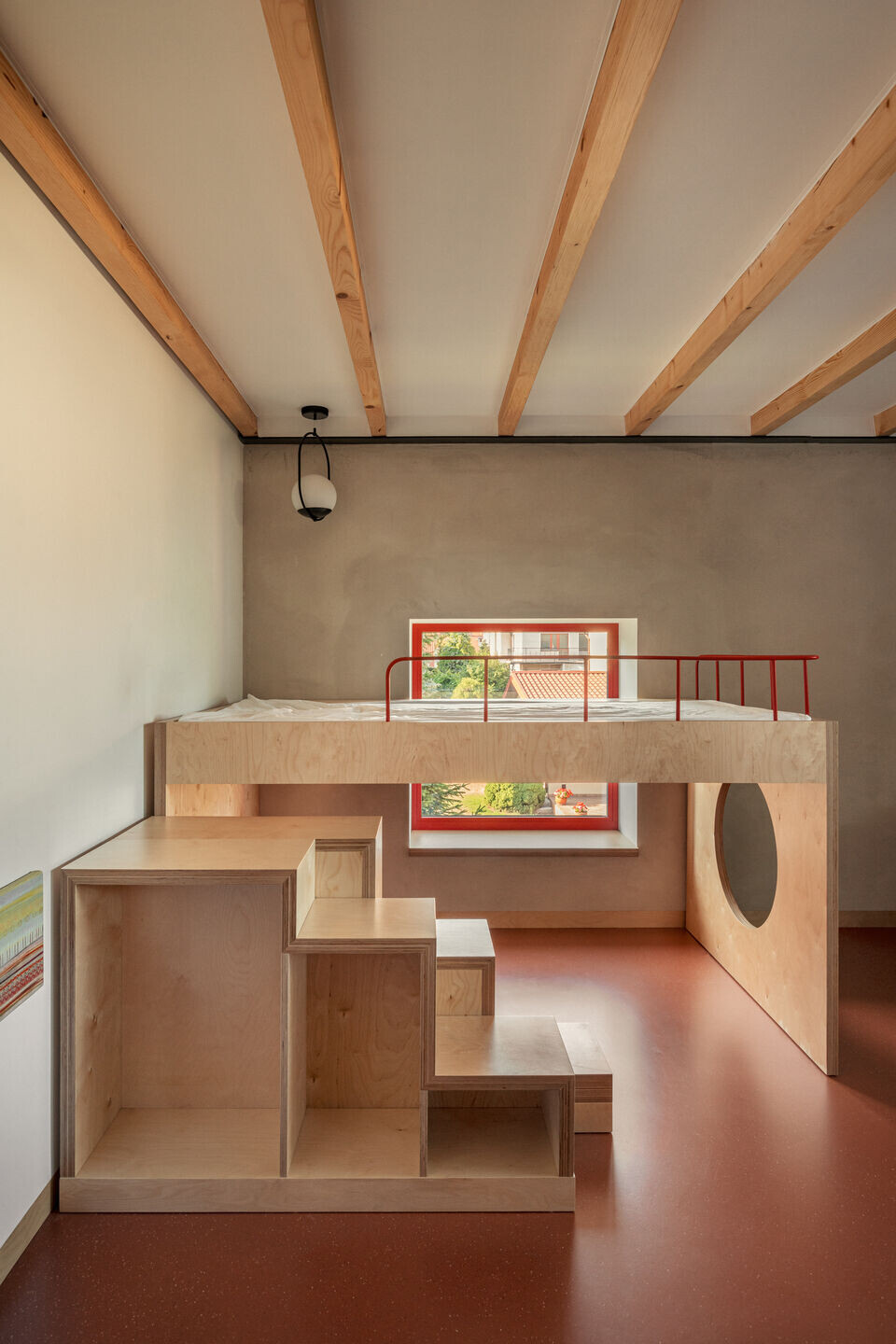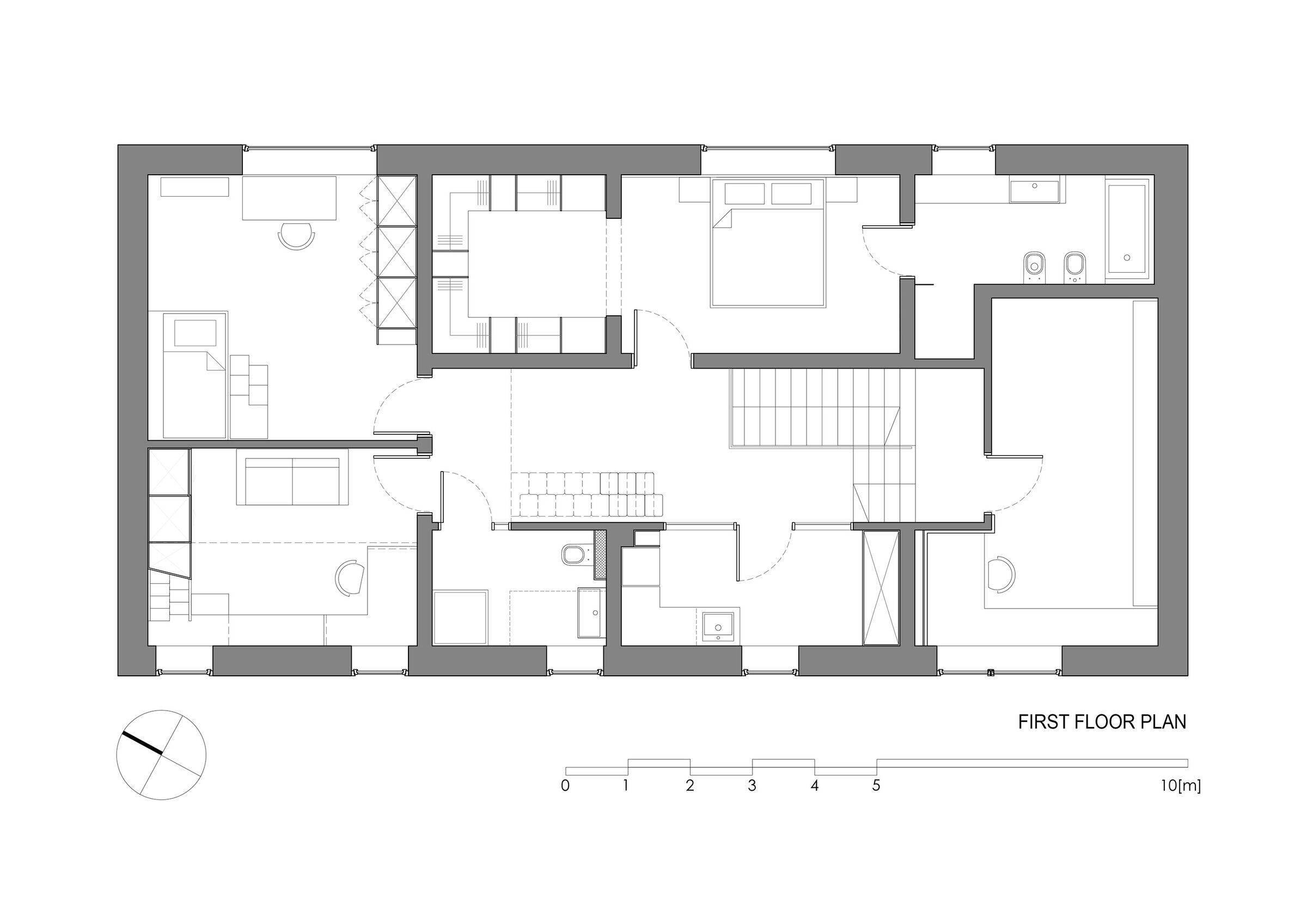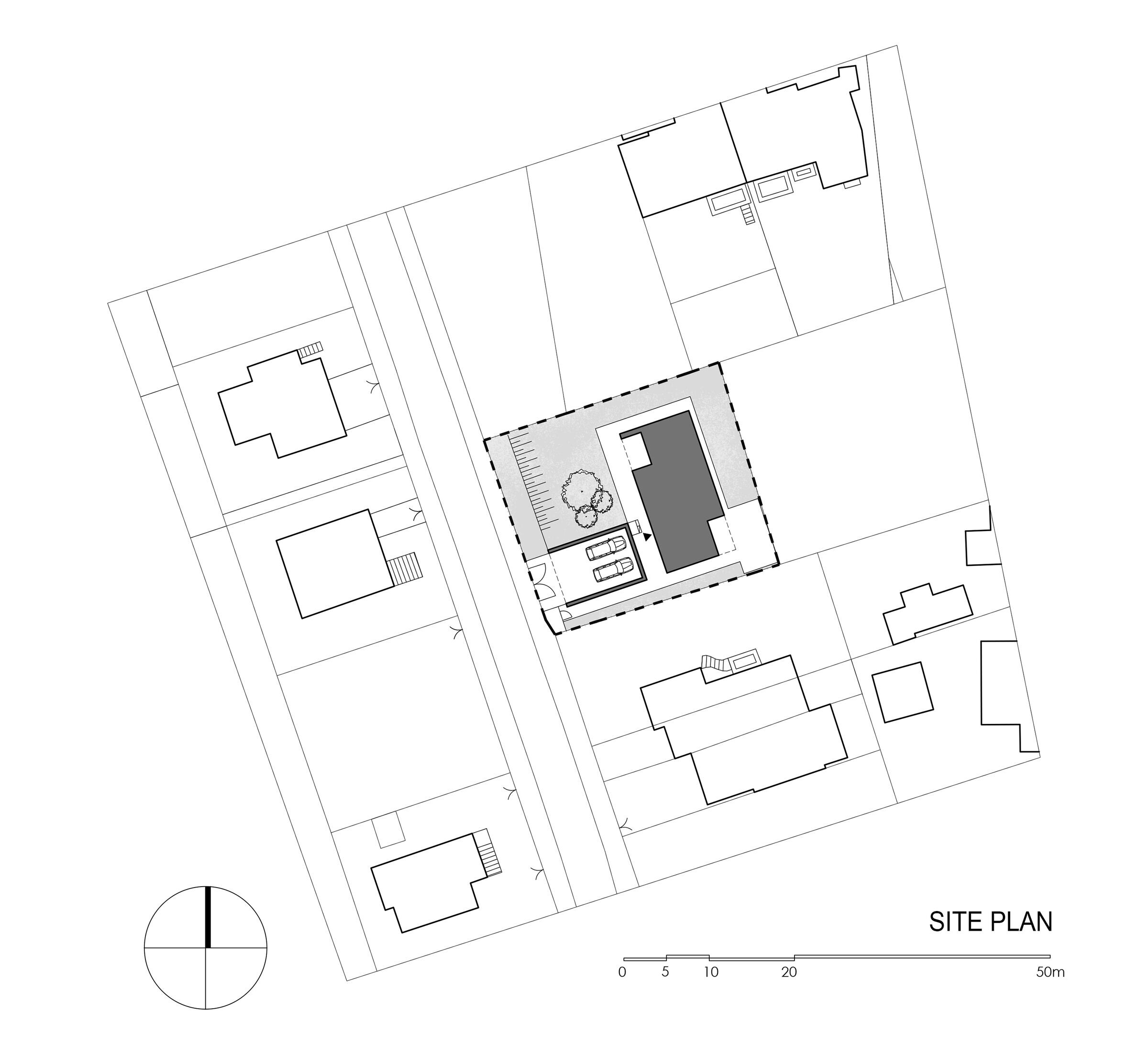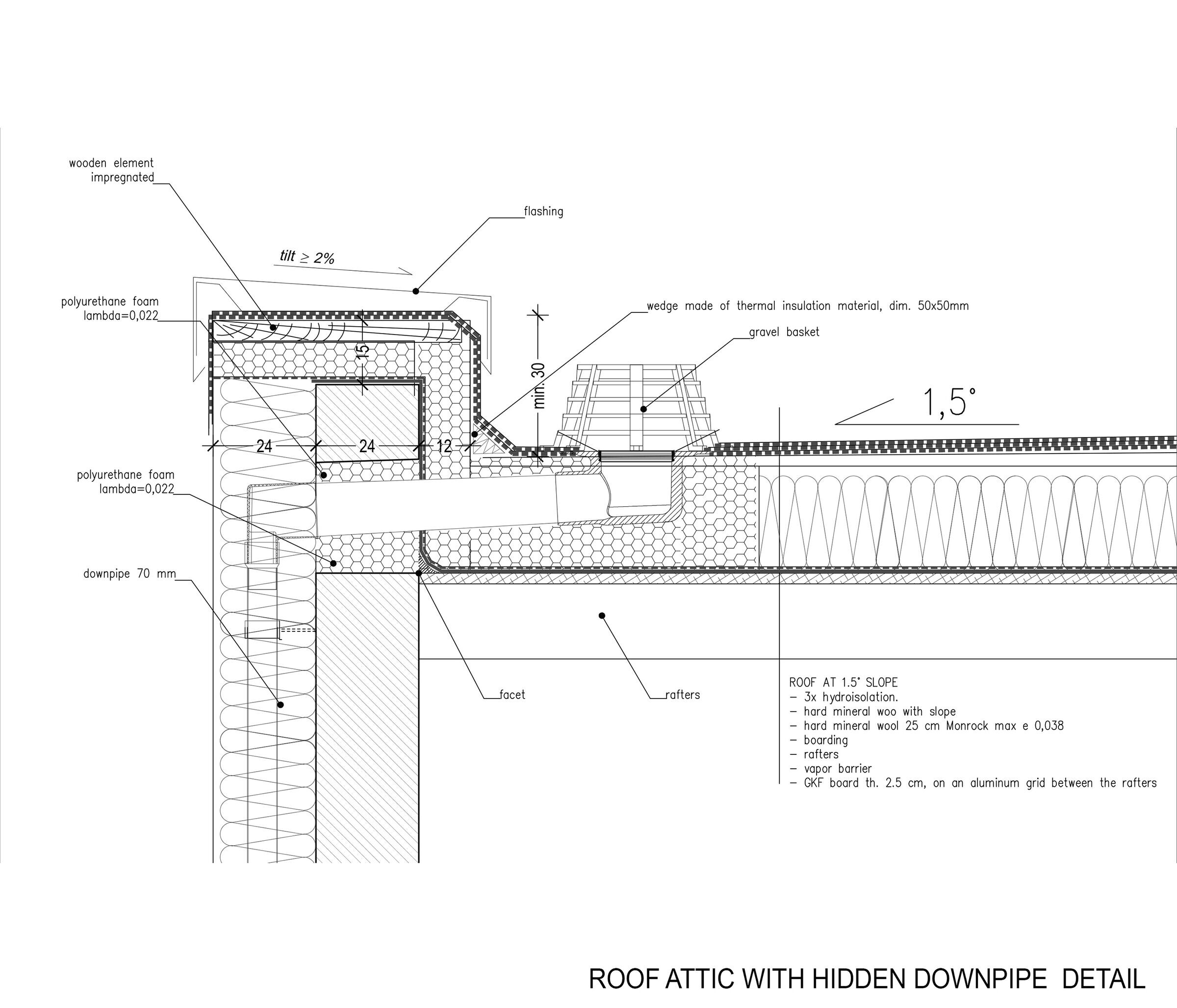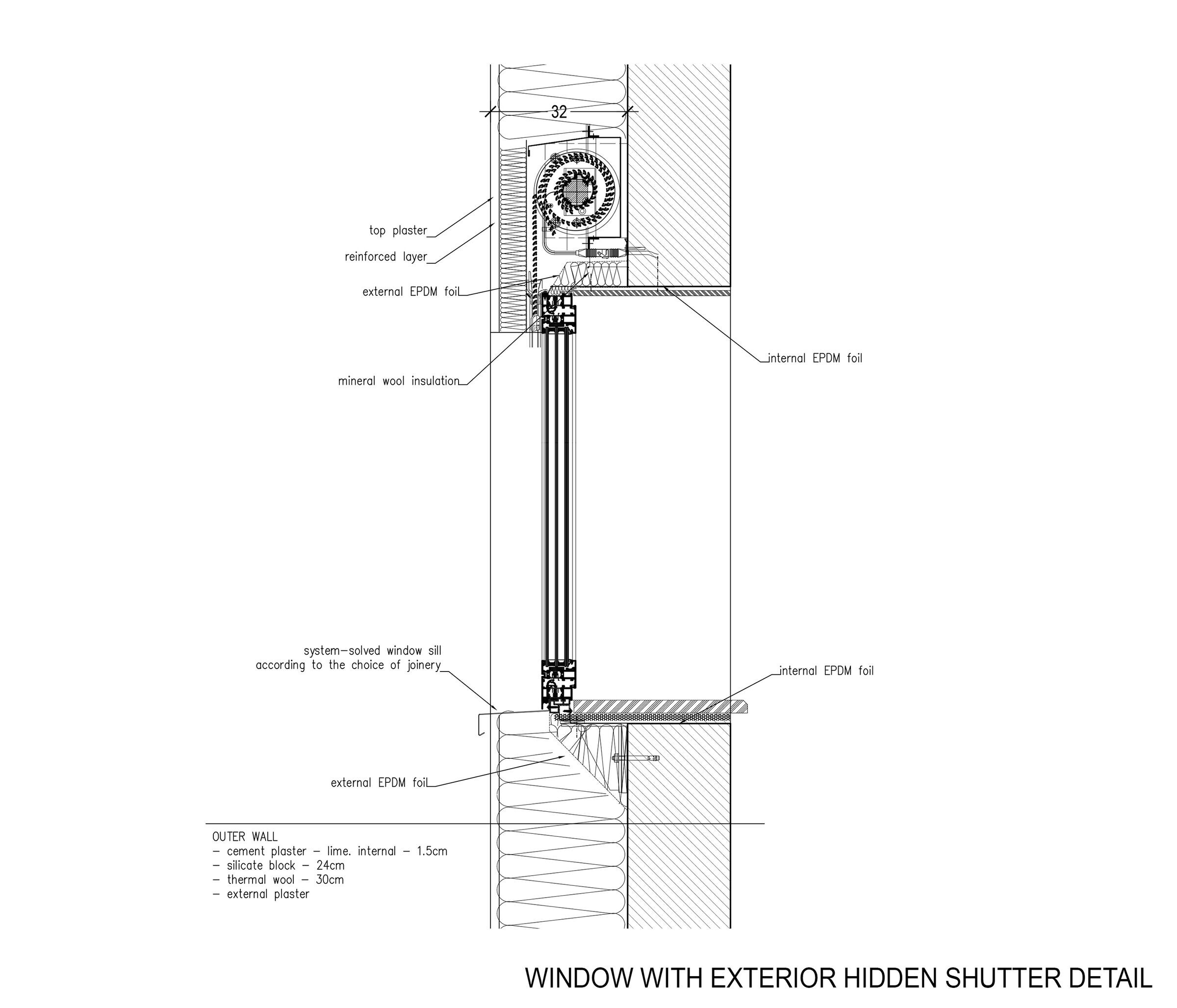The project carried out by architects from IFA Group is located in one of the housing estates of single-family houses in Gdańsk. The new houses' construction is very "diverse" in terms of spatial order and aesthetics. Proportions for the mass were drawn from the surroundings, as well as the color of the facade from the land on which the house stands. The mass was simplified, getting rid of unnecessary decorations. Each decision made during the design process has its arguments.

The entrance to the plot is located from the south. Fruit trees were already growing in its central part. The house was located behind them to take advantage of the south for daily use. Everything worked out with the cooperation of a very aware and open-minded investor who actively participated in the whole process. The owner also had her guidelines. The kitchen, dining room, and living room were to be spacious, and open to each other, but without unnecessary surface area.

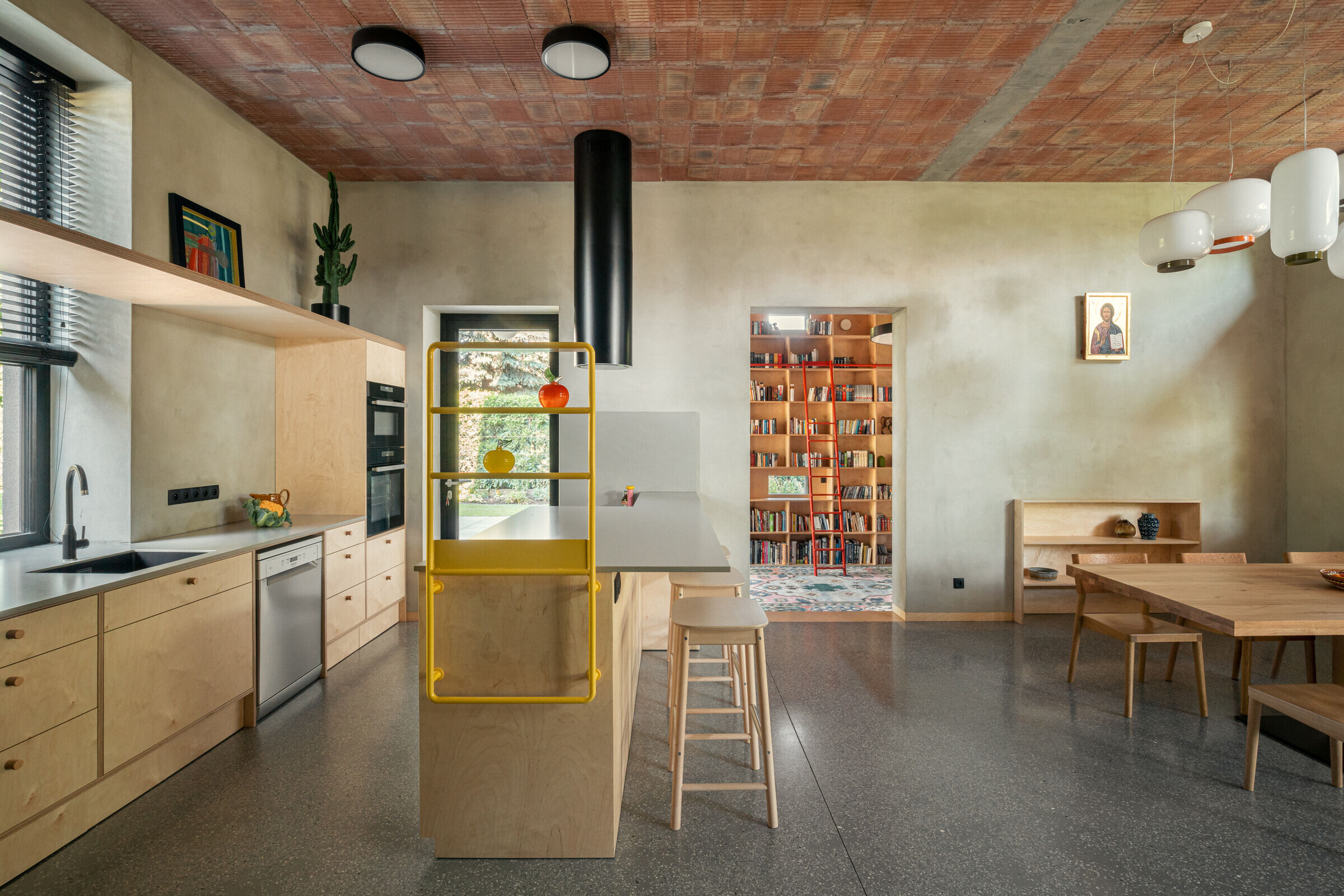
Additionally, the kitchen had a window facing the street. In the dining room, there was a large table with a designated place for play and learning for the child. The windows were meant to resemble paintings but without huge glazing. The owners attached great importance to terraces as separate rooms, and it was also important not to overheat the rooms.
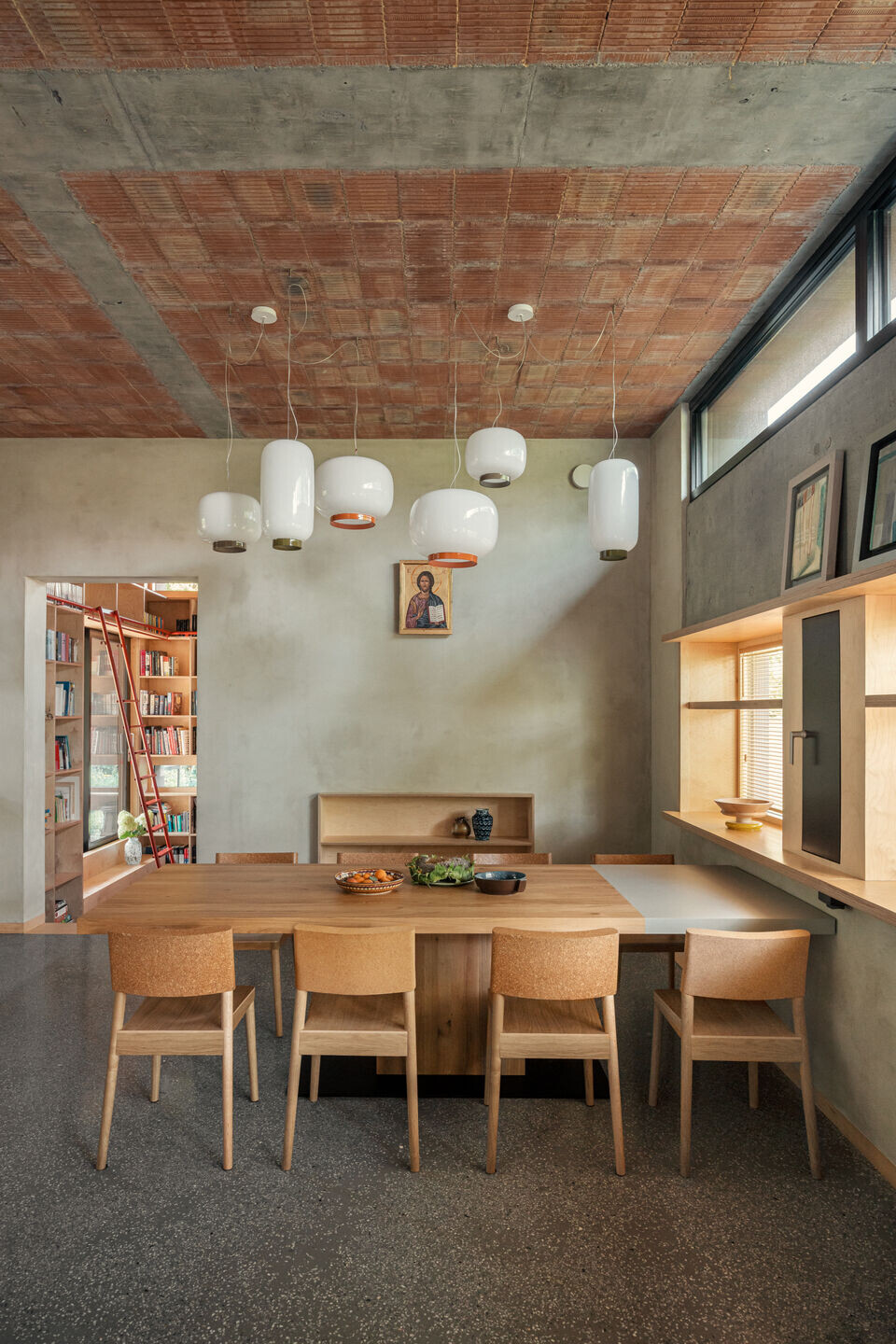
And so, in accordance with the Owners' guidelines, these three rooms became the center of the house. Another important interior space is the family room for play, which is also a reading room - this room has a height of 4 meters. When it comes to window exposure to light, large south-facing windows are not always beneficial for the functioning of the house. It is easier to heat up the building, but much harder to cool down from overheating. Such a process requires much more energy. Windows in this project "control" daylight. They also serve to frame views - they are directed upwards to see the sky or downwards to enjoy a view of greenery - says Kamil Domachowski, an architect from the IFA Group.

After entering the house, there is a bathroom straight ahead. It was designed in an unconventional way. Its door is hidden in the line of stairs. "The stairs leading to the first floor are integrated with the bathroom door and the whole creates a coherent image," adds the architect. "In this project, we focused on details. Another one is the secretary desk located under the stairs near the bathroom," continues Kamil Domachowski.
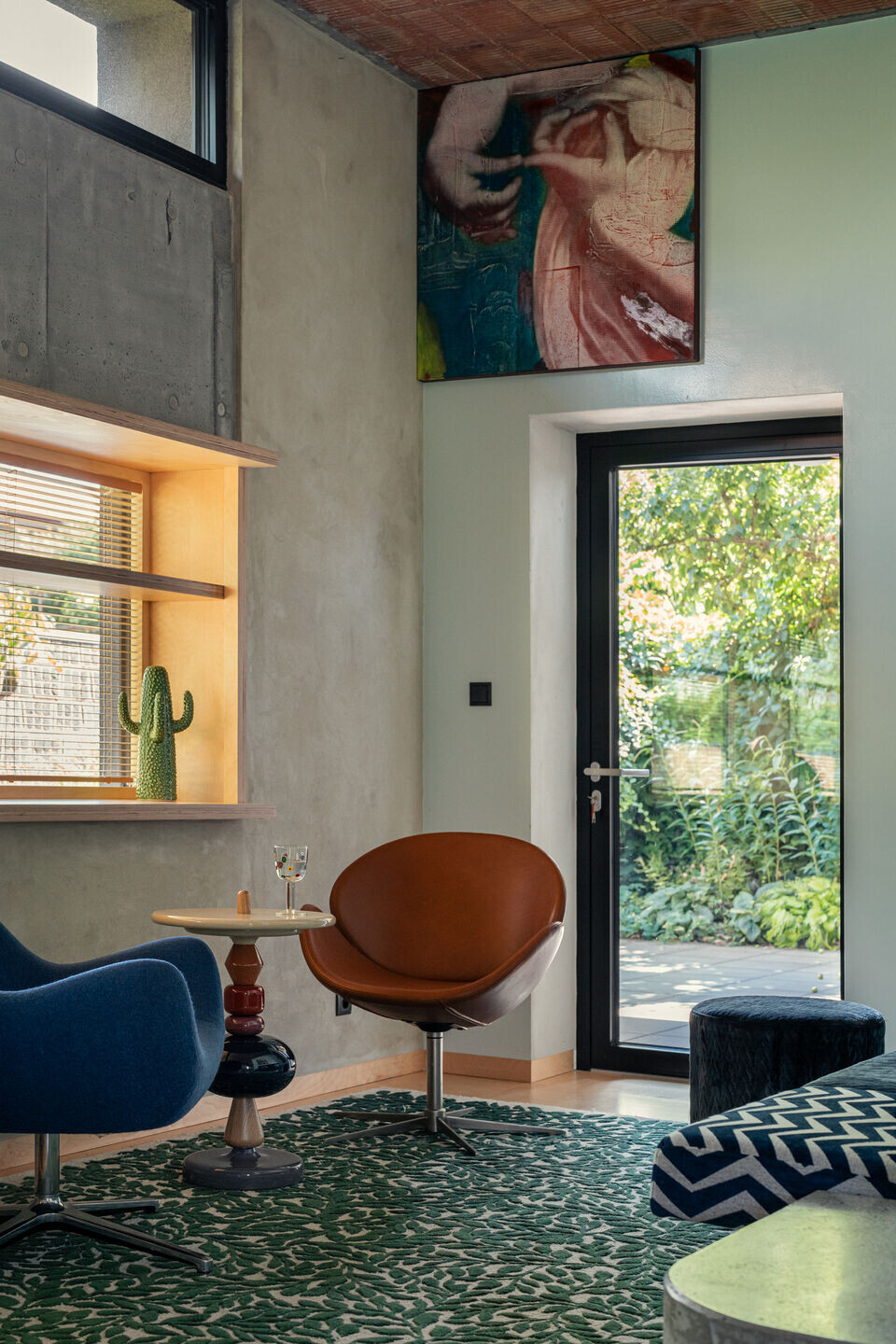
The coffee room, as always tidy and clean interior for entertaining guests, has a seating area with extended stairs leading to the upper floor. The owner mentioned that she often played on the stairs as a child and remembered it as a pleasant association. The house has two terraces - the west one facing the garden, the east one designed for spending time with morning coffee. This part of the interior is an extension of the garden. Two walls are painted blue, which refers to the sky visible from the window near the ceiling.
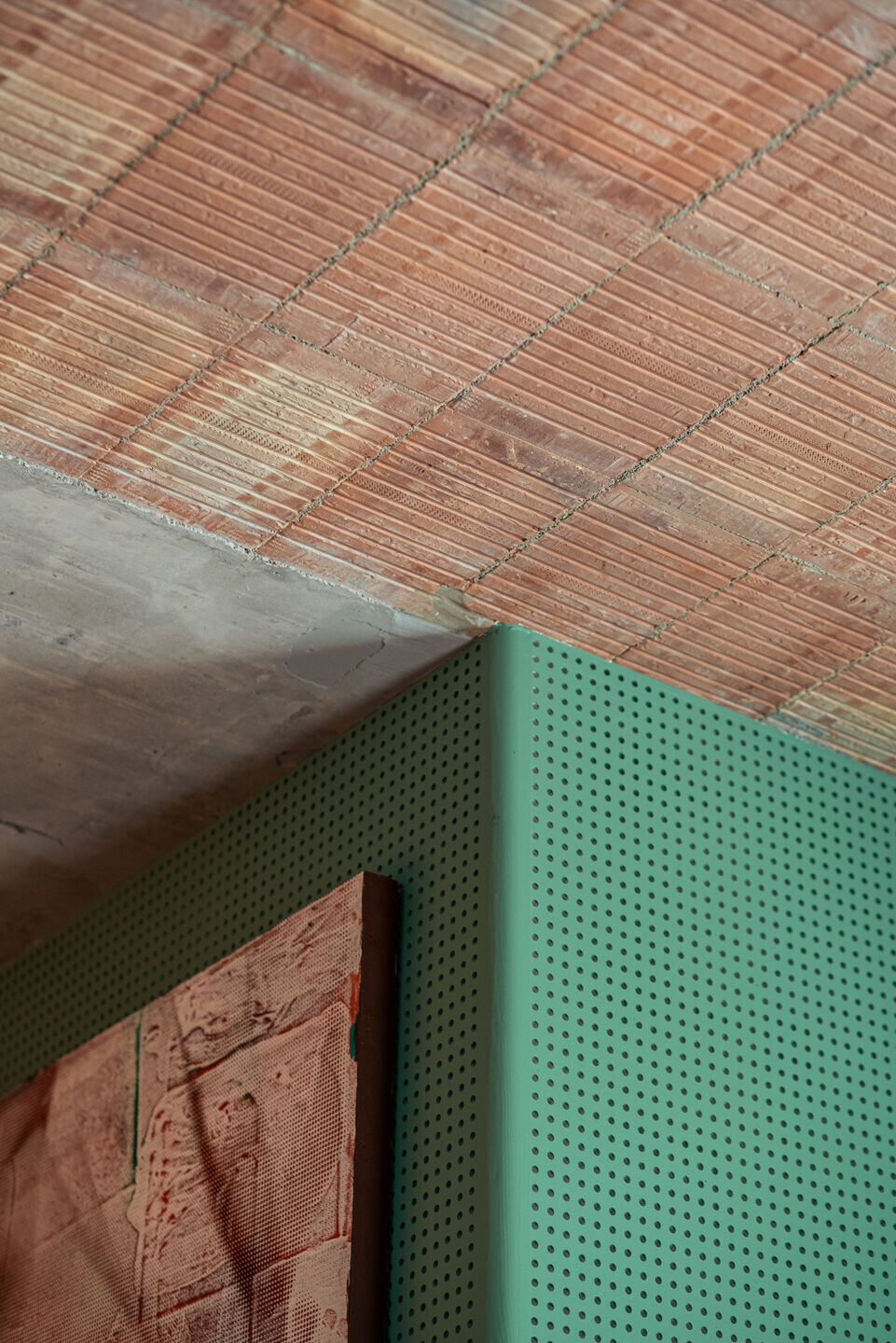
When designing this house, the architects focused on natural colors and materials. Among other things, sand-cement plaster impregnated colorlessly was used. The ground floor ceiling was made of ceramic blocks, which remained raw, in their unchanged form. Seeking logic in every decision, the top of the ceiling above the ground floor was finished with a ceramic resin color, as a layer separating the stories. The structural and material solutions of this house penetrate both between themselves and between the floors.


The pantry walls on the ground floor and the walls in the hallway on the first floor were partially made of acoustic perforated panels to reduce the rawness of the rooms. On the first floor, bathrooms and a laundry room are intentionally located on the southern side of the building to prevent overheating of the bedrooms. A zone for the parents was created in the northeast part of the house, consisting of a bedroom, a wardrobe, and an internal bathing room.
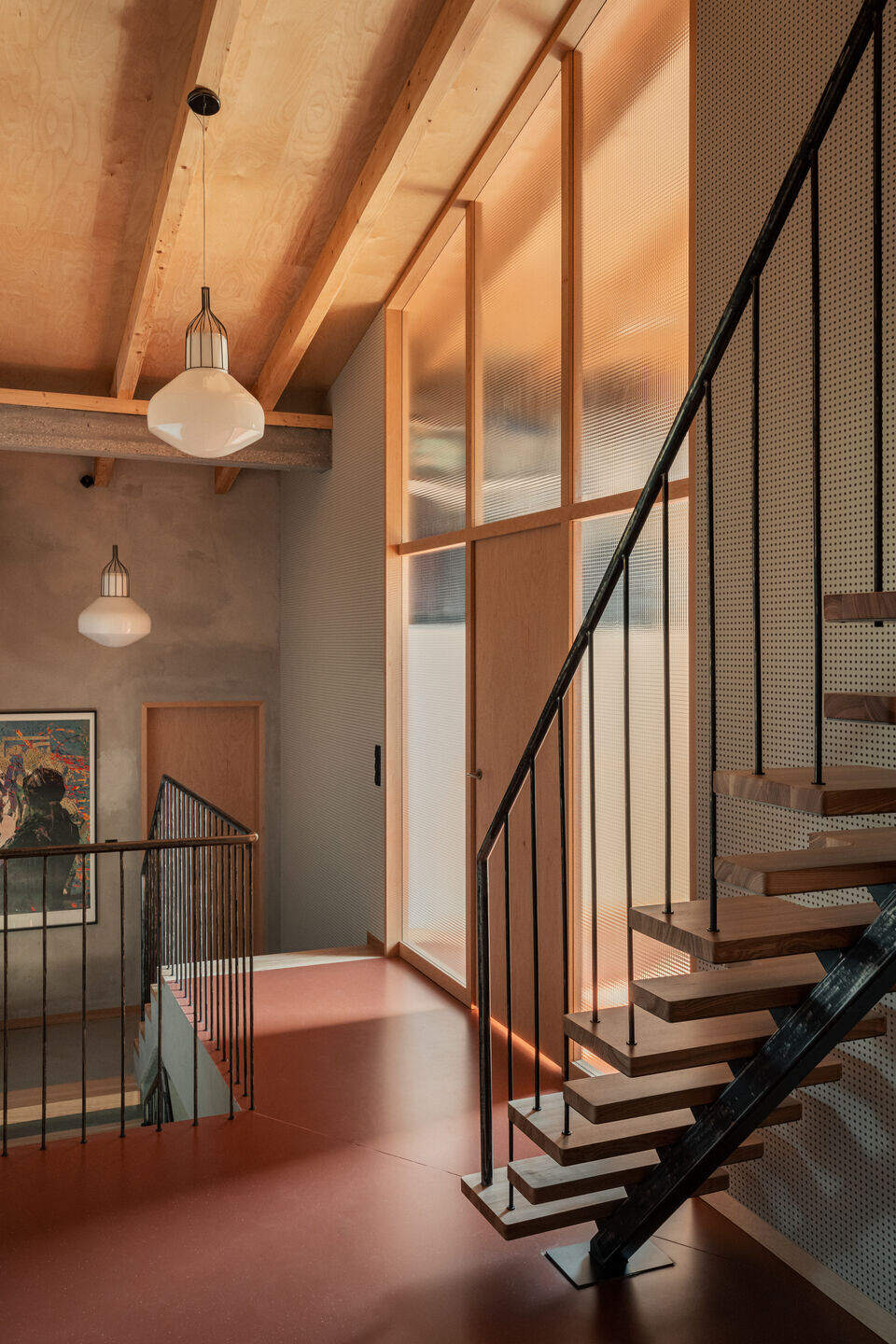
To achieve the best possible view of the sky from the living area, a long window near the dining room and small coffee lounge is located right under the ceiling, instead of above the lintel - a large overhang was provided along the entire length of this part of the interior. The overhang on the upper floor became a finishing touch and an idea for the parents' bedroom, serving as the headboard of the bed. The whole interior is decorated with paintings, some of which were already owned by the Investors. The children's rooms and the study are located at opposite ends of the hallway. A green roof was designed above the garage, which serves as an extension of the study and provides an additional close-up view of the greenery.

Designing such an unusual house was a challenge. The architects emphasize the great role of the Investor. "Mutual inspiration of ideas, but also support in creating logic and finding arguments to make the best decisions for the space was a pleasure. Cooperation between the studio and the owners is very important. This house is a joint success of both parties," concludes architect Kamil Domachowski.
